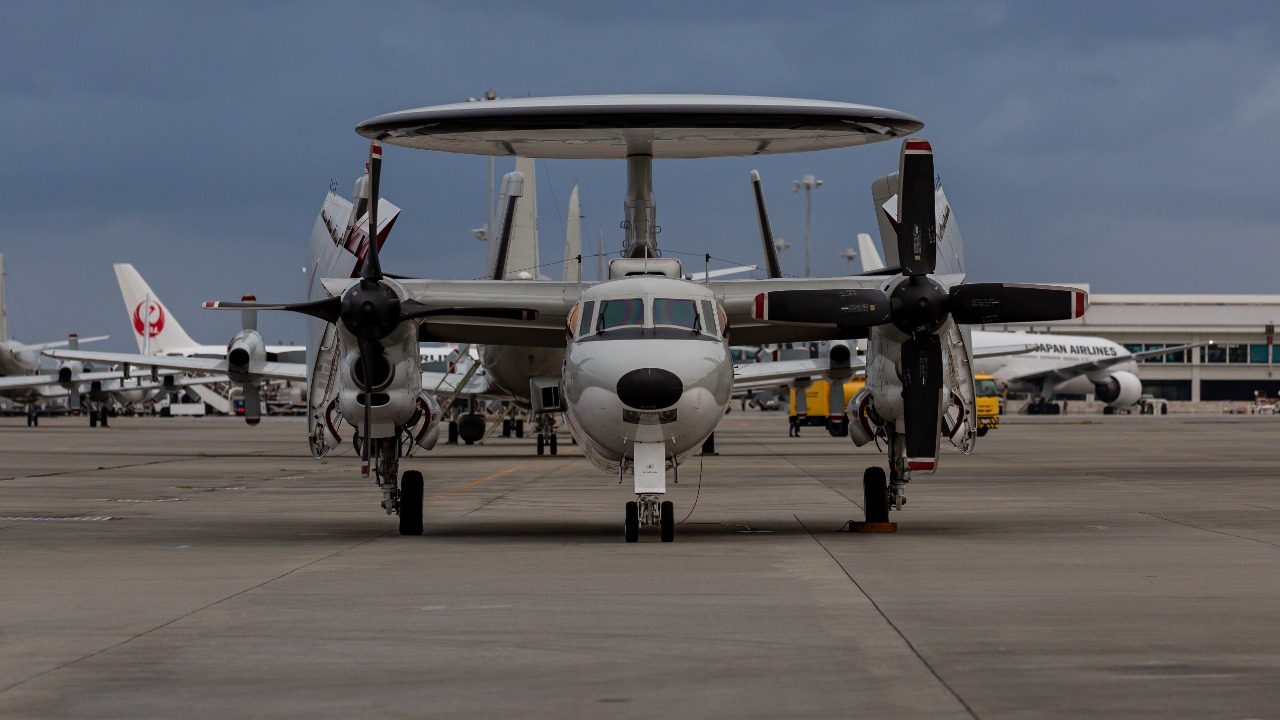
The E-2D Advanced Hawkeye, the U.S. Navy’s primary carrier-based airborne early warning and command and control aircraft, has showcased its impressive aerial refueling capabilities. This achievement was marked during a successful test with the MQ-25 Stingray unmanned tanker, making it the second unmanned aerial tanking event to date. This integration significantly enhances the E-2D’s endurance for extended missions, and ongoing upgrades aim to keep this aircraft operational and dominant into the 2040s.
Overview of the E-2D Advanced Hawkeye
The E-2D Advanced Hawkeye plays a crucial role in the U.S. Navy’s operations, serving as the primary carrier-based airborne early warning and command and control aircraft. Its primary function is to detect threats and coordinate operations, ensuring the safety and efficiency of naval missions. The aircraft is equipped with advanced radar systems, designed to provide comprehensive surveillance and threat assessment.
One of the key features of the E-2D is its design for integration with unmanned systems. This includes compatibility for aerial refueling, a feature that has evolved from earlier Hawkeye variants to support prolonged airborne presence. This ability to receive fuel mid-flight from various platforms, including unmanned tankers like the MQ-25 Stingray, significantly extends the E-2D’s operational endurance.
Development of Aerial Refueling Capabilities
The E-2D was retrofitted with a probe-and-drogue refueling system to enable mid-air fueling. This capability was added to extend mission times beyond previous limits, allowing the aircraft to stay airborne for extended periods without needing to return to the carrier for refueling. The certification process for refueling included rigorous tests with manned tankers like the KC-130 and KC-46 to validate safe operations.
The MQ-25 Stingray made history as the first unmanned tanker to refuel the E-2D Advanced Hawkeye on August 18, 2021. This marked a significant milestone in the development of aerial refueling capabilities, demonstrating the potential for unmanned systems in extending the operational endurance of manned aircraft.
Technical Mechanics of the Refueling Process
The E-2D utilizes the probe-and-drogue method for aerial refueling. In this process, a telescoping probe extends from the aircraft to connect with a drogue basket trailed by the tanker. This connection allows for the transfer of fuel mid-flight, with the E-2D capable of receiving up to several thousand pounds of fuel per session.
The in-flight alignment and fuel transfer process require precise coordination and control. Pilots must maintain formation with the tanker while the fuel is being transferred, a task that requires significant skill and concentration. To ensure reliability during these high-speed, turbulent connections, safety protocols such as automated disconnects are in place, and pilots undergo extensive training.
Key Milestones in E-2D Refueling Tests
The development of the E-2D’s aerial refueling capabilities has seen several key milestones. Initial manned refueling trials began in the mid-2010s, certifying the E-2D for buddy tanking and tanker operations. These trials were crucial in establishing the safety and viability of the refueling process.
The August 18, 2021, event marked a significant milestone, with the MQ-25 Stingray refueling the Navy E-2D Advanced Hawkeye. This was the second unmanned aerial tanking to date, demonstrating the potential for unmanned systems in aerial refueling operations. Subsequent demonstrations validated the system’s performance in diverse conditions, including night operations and over-water scenarios.
Operational Benefits for Navy Missions
Aerial refueling provides significant operational benefits for Navy missions. With this capability, the E-2D can remain aloft for over 12 hours, providing continuous surveillance without needing to return to the carrier. This extended endurance allows for real-time coordination with strike groups and unmanned assets, enhancing battle management capabilities.
There are also cost efficiencies associated with aerial refueling. By reducing the need for multiple sorties and optimizing carrier deck space, aerial refueling can lead to significant savings in time and resources. These benefits highlight the strategic value of the E-2D’s aerial refueling capabilities.
Future Upgrades and Long-Term Viability
Looking ahead, there are plans for further avionics and sensor improvements to the E-2D. These upgrades aim to ensure seamless integration with next-generation tankers and fighters through the 2030s. Sustainment efforts are also underway to keep the E-2D Advanced Hawkeye operational into the 2040s, with enhancements planned for the aircraft’s engine for better fuel efficiency.
There is also potential for further expansions, such as the development of autonomous refueling interfaces. These innovations could further boost the platform’s adaptability in contested environments, ensuring the E-2D’s long-term viability as a key asset in the Navy’s operations.
Challenges and Innovations in Refueling Integration
The integration of aerial refueling capabilities into the E-2D was not without its challenges. One of the key hurdles was ensuring aerodynamic stability during probe extension on the E-2D’s unique airframe. Overcoming this challenge required significant engineering expertise and innovation.
There have also been significant innovations in the E-2D’s aerial refueling capabilities, including the development of software for precise drogue tracking. This technology plays a crucial role in ensuring the accuracy and safety of the refueling process. Ongoing research and development efforts aim to mitigate risks, such as weather impacts, to ensure robust performance in global operations.
More from MorningOverview